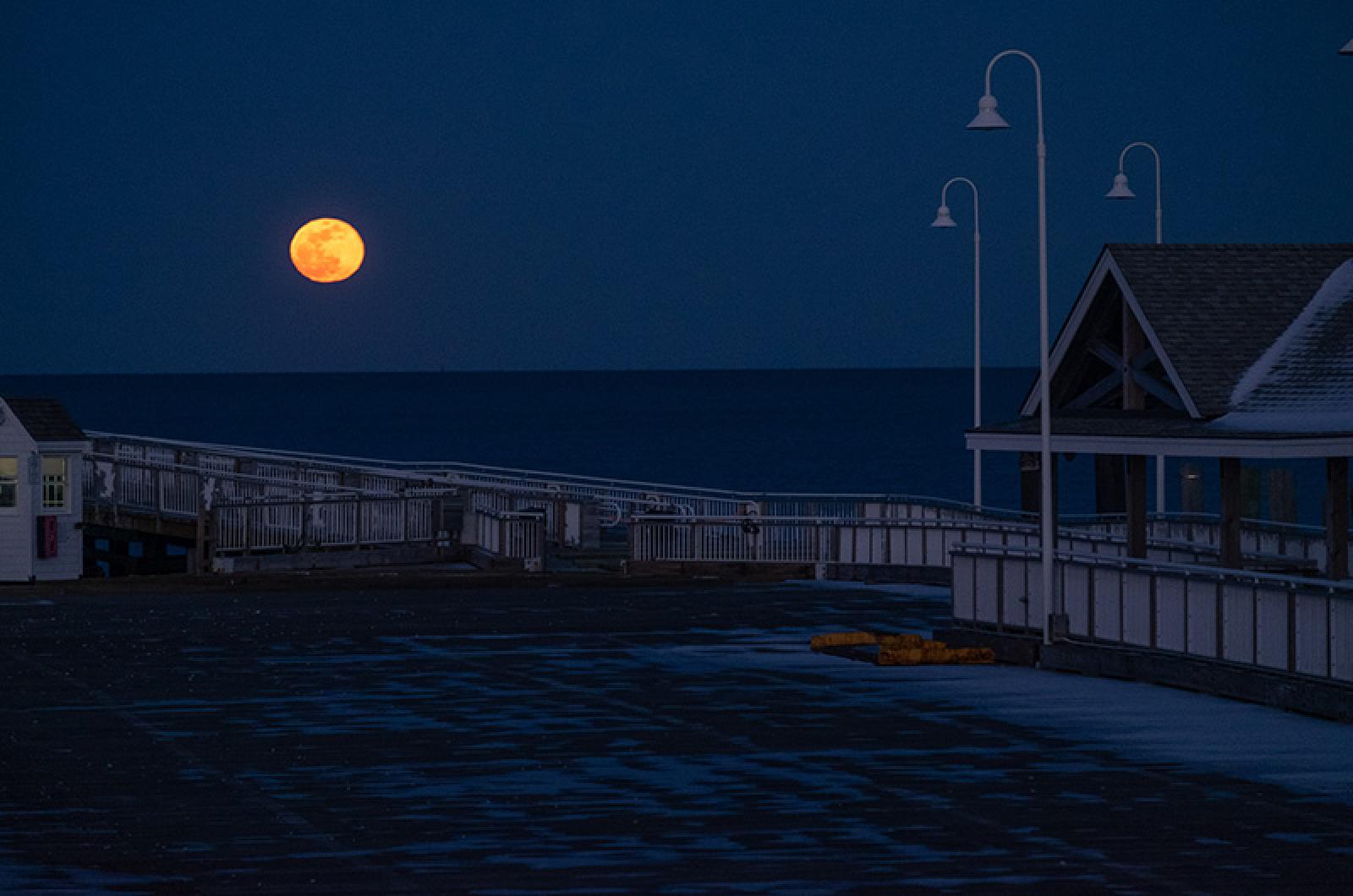Tomorrow night’s gibbous moon appears in the spring-time constellation Virgo. The moon is not far from the bright star Spica, one of the brightest star in the late night sky. It is certainly one of the largest.
Spica is 260 light years away. And it is actually made up of two stars. Just for comparison, the brightest star in the night sky is Sirius which is now hovering over the southwestern sky. Sirius is to the left and under the great hunter, Orion.
While Sirius is the brightest, it pales in comparison to the size of Spica. Sirius is bright because it is close, 8.6 light years away. If Sirius was as far away as Spica you’d have a tough time finding it in the night sky.
The waning last quarter moon appears close to the bright planet Jupiter on Wednesday morning. You’ll see the two if you are outside well before sunrise.
| Day | Sunrise | Sunset |
|---|---|---|
| Fri., Feb. 22 | 6:27 | 5:23 |
| Sat., Feb. 23 | 6:26 | 5:24 |
| Sun., Feb. 24 | 6:24 | 5:25 |
| Mon., Feb. 25 | 6:23 | 5:26 |
| Tues., Feb. 26 | 6:21 | 5:28 |
| Wed., Feb. 27 | 6:20 | 5:29 |
| Thurs., Feb. 28 | 6:18 | 5:30 |
| Fri., March 1 | 6:17 | 5:31 |
| Day | Max (Fº) | Min (Fº) | Inches |
|---|---|---|---|
| Feb. 15 | 40 | 29 | 0.00 |
| Feb. 16 | 50 | 37 | T |
| Feb. 17 | 43 | 25 | 0.00 |
| Feb. 18 | 36 | 26 | *0.45 |
| Feb. 19 | 35 | 19 | *T |
| Feb. 20 | 32 | 21 | 0.00 |
| Feb. 21 | 39 | 26 | 0.45 |




Comments
Comment policy »